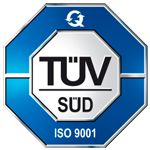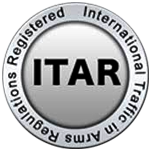The Definitive Ultimate Guide to Mastering Axis CNC Machines for Your Business Success
In the rapidly evolving landscape of manufacturing, the efficiency and precision offered by Axis CNC machines have become indispensable for businesses aiming to maintain competitive advantage. According to a recent report by Grand View Research, the global CNC machine market is projected to reach $100 billion by 2025, driven largely by the increasing demand for automation and precision engineering across various industries.

However, despite the undeniable benefits of Axis CNC machines, many companies still face numerous challenges, ranging from operational inefficiencies to skills shortages. Understanding the intricacies of these machines is crucial for overcoming such hurdles and ensuring business success. This guide aims to equip you with the knowledge needed to master Axis CNC machines, addressing common problems and offering effective solutions to foster growth and innovation in your operations.
Understanding the Basics of Axis CNC Machines: A Comprehensive Overview
Understanding the basics of Axis CNC machines is essential for businesses aiming to enhance their manufacturing processes. These machines, which utilize a system of linear and rotary axes, provide unparalleled precision and versatility for various applications, from prototyping to high-volume production. According to industry reports, the global CNC machine market is projected to reach over $100 billion by 2025, driven primarily by advancements in automation and the increasing demand for precision engineering.
Post processors play a pivotal role in optimizing the functionality of Axis CNC machines. They act as a bridge between computer-aided design (CAD) software and the CNC machine, translating the design into machine-specific code. This ensures that the machine operates efficiently, reducing downtime and improving the overall workflow. Reports indicate that implementing effective post processors can improve machining accuracy by up to 20%, which significantly enhances product quality. Understanding how to select and utilize these post processors within software programs is crucial for any business looking to gain a competitive edge in an increasingly technical marketplace.
The Definitive Ultimate Guide to Mastering Axis CNC Machines for Your Business Success
| Feature | Description | Importance | Common Applications |
|---|---|---|---|
| Axis Count | Indicates the number of movements the machine can perform simultaneously. | High - A greater axis count allows for more complex shapes. | 3D Printing, Aerospace, Automotive Parts Manufacturing |
| Spindle Speed | The rotational speed of the spindle, usually measured in RPM. | Medium - Affects the cutting efficiency and surface finish. | Metal Cutting, Woodworking, Plastic Milling |
| Controller Type | The software and hardware interface used to operate the CNC machine. | High - Affects ease of use and programming capabilities. | Prototyping, Customized Manufacturing |
| Material Compatibility | Types of materials that can be machined by the CNC. | High - Determines the versatility of the machine. | Metals, Plastics, Composites |
| Precision | The degree to which the CNC machine can accurately replicate designs. | Very High - Essential for quality control in manufacturing. | Medical Devices, Aerospace Components |
Choosing the Right Axis CNC Machine for Your Specific Business Needs
When selecting the right axis CNC machine for your specific business needs, it's crucial to understand the operational requirements and production goals of your facility. According to a recent report from Research and Markets, the global CNC market is projected to reach $117 billion by 2026, with an increasing demand for multi-axis machines. These advanced machines offer enhanced versatility and precision, making them ideal for complex projects that require high-quality finishes.
Multi-axis CNC machines, particularly 5-axis models, allow for more intricate designs and fewer setups, significantly increasing throughput. The same report indicates that businesses employing multi-axis machines can boost productivity by up to 30%. This efficiency is essential for industries such as aerospace and automotive, where precision and speed are paramount. Therefore, carefully evaluating production volume, material types, and design complexity will ensure that you choose a CNC machine that aligns with your operational capabilities and future growth ambitions.
Step-by-Step Guide to Setting Up and Calibrating Your CNC Machine
Setting up and calibrating your Axis CNC machine can initially seem daunting, but with a step-by-step approach, it becomes a manageable task that can significantly enhance your business operations. Begin by carefully unpacking your CNC machine, ensuring that all components are accounted for. Follow the manufacturer's documentation for assembly, paying close attention to the alignment of the frame and axis. Once assembled, connect the machine to your computer and install the necessary software that can interface with your CNC system. This step is crucial, as it lays the foundation for effective communication between the hardware and your design files.
Calibration is the next essential phase that directly impacts precision and accuracy in your machining processes. Start by checking the machine's axes for movement and ensuring they respond correctly to commands. Utilize calibration tools, like dial indicators, to fine-tune the machine's settings. This may include adjusting the pitch of the screws and ensuring that the motors are synchronized. Once all axes are calibrated, run a series of test cuts on scrap material to verify settings. This practical approach not only helps identify any remaining issues but also builds your confidence in operating the CNC machine, setting the stage for successful projects ahead.
The CNC Machine Setup Process
This bar chart illustrates the estimated time required for each step in the CNC machine setup process. It includes preparation, assembly, calibration, testing, and final adjustments, highlighting the importance of planning and efficiency in achieving a successful setup.
Essential Software and Tools for Maximizing CNC Machine Efficiency
In the realm of CNC machining, the efficiency of your machine tools can significantly impact your business's success. Recent advancements in simulation software are revolutionizing metal cutting processes by minimizing errors and enhancing precision. By utilizing finite element analysis and structural optimization, businesses can ensure the dynamic and static properties of their high-precision machines are refined, leading to improved surface quality and machining efficiency. According to market reports, the machine tools industry is poised to grow from $81.09 billion in 2025 to an estimated $105.11 billion by 2030, showcasing the increasing demand for innovative solutions in this field.
To maximize CNC machine efficiency, consider the following tips: first, integrate simulation software into your workflow to visualize and preemptively eliminate potential issues in machining processes. Second, embrace high-speed milling techniques that allow for light radial cuts, optimizing tool engagement and material removal rates. Finally, ensure you are using advanced cutting tools specifically designed for challenging materials, as they can significantly increase productivity while maintaining high standards of precision and quality. These strategies are essential to capitalize on the rapidly evolving landscape of CNC machining and to stay competitive in a growing market.
Common Troubleshooting Tips for Axis CNC Machines in Business Operations
When it comes to maximizing the efficiency of Axis CNC machines, troubleshooting common issues is paramount for successful business operations. One of the most prominent challenges faced by operators is the need for precise control in the face of increasingly complex materials, such as exotic alloys and hard metals. For instance, integrating high-torque retention knobs can significantly enhance tooling stability, ultimately improving productivity and reducing downtime. This is particularly crucial for industries like aerospace, where precision and reliability are non-negotiable.
Additionally, software solutions such as GRBL are essential for those looking to streamline their CNC processes further. As an open-source firmware, GRBL allows for fine-tuned control over machinery, enabling users to address operational hiccups quickly and effectively. Moreover, adopting technologies like machine simulation can provide insights into potential issues before they arise, allowing for proactive problem-solving. Understanding these troubleshooting tips can help CNC machine operators not only navigate common challenges but also position their businesses for sustained success in a competitive market.
Related Posts
-

Ultimate Guide to Maximizing Efficiency with Axis CNC Machines in Your Workshop
-

Revolutionizing Global Supply Chains with Advanced CNC Parts Machining Technologies
-

Explore the Rise of Axis Cnc Machines at the Record Breaking Canton Fair 2025
-

5 Essential Tips to Optimize Your CNC Turning and Milling Processes for Better Efficiency
-

Choosing the Right Manufacturer for Best Cnc Parts and Tailored Solutions for Your Needs
-

Understanding Industry Production Standards for the Best Multi Axis Cnc Milling Machine
NORTH EASTON MACHINE • 218 Elm Street • North Easton, MA 02356 • 508-238-6219

